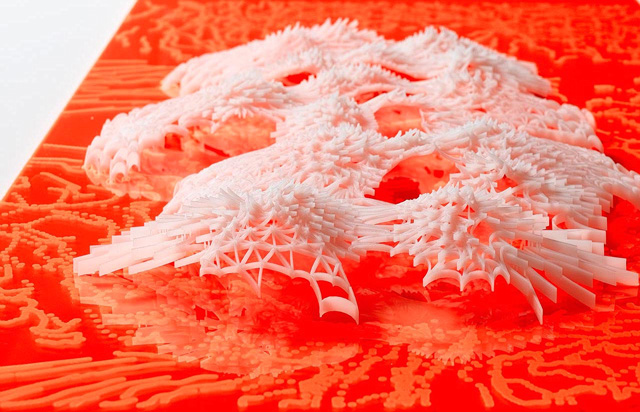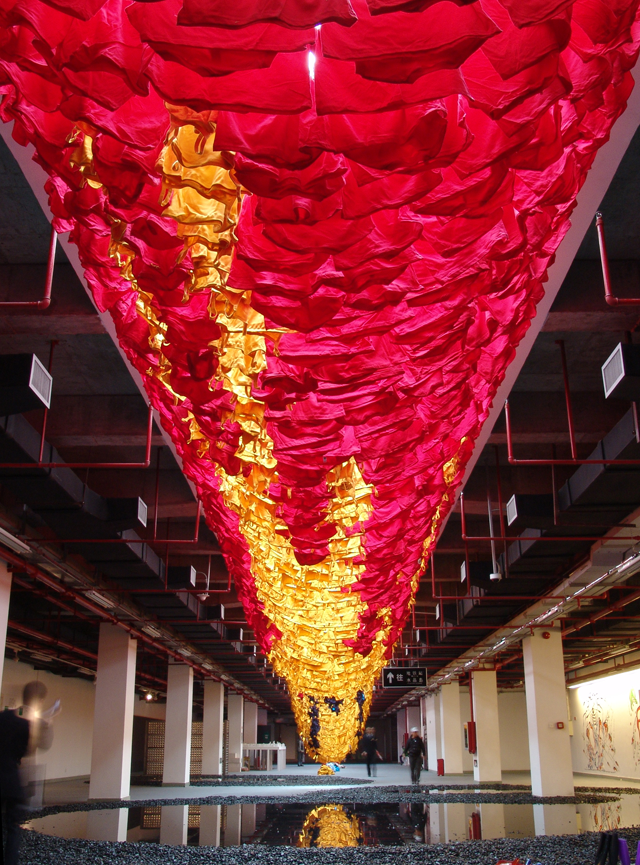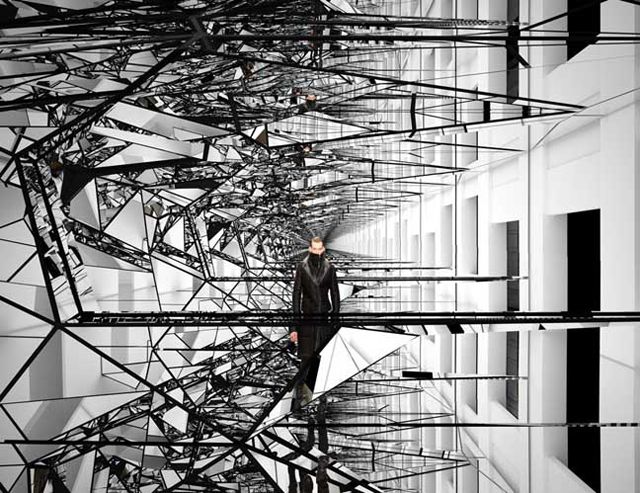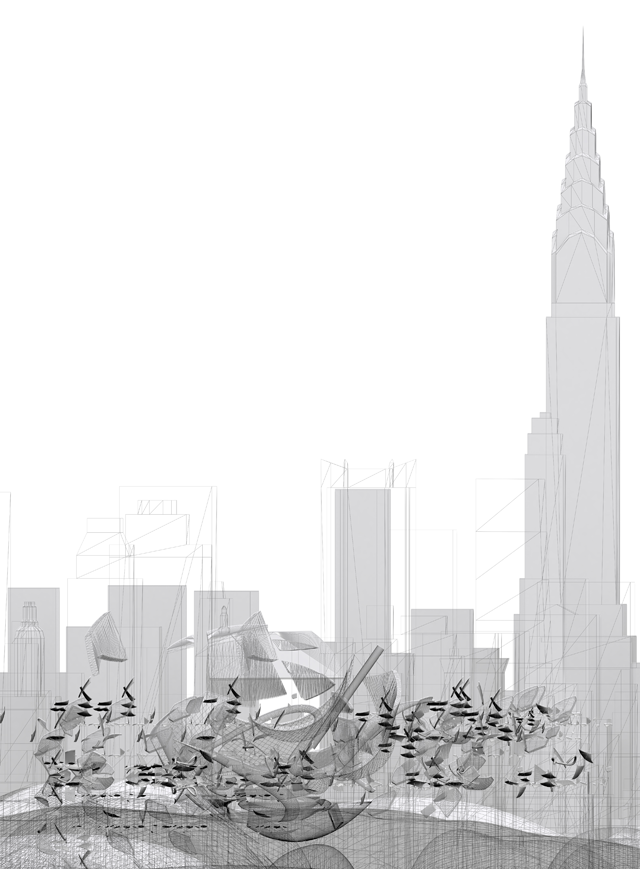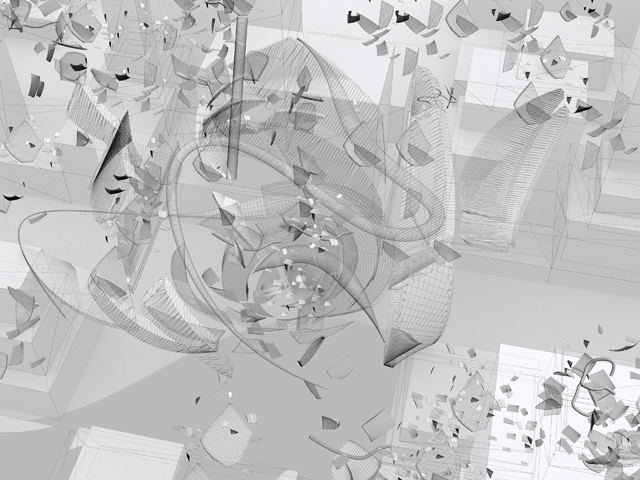MORPHOLOGIC ARCHITECTURE
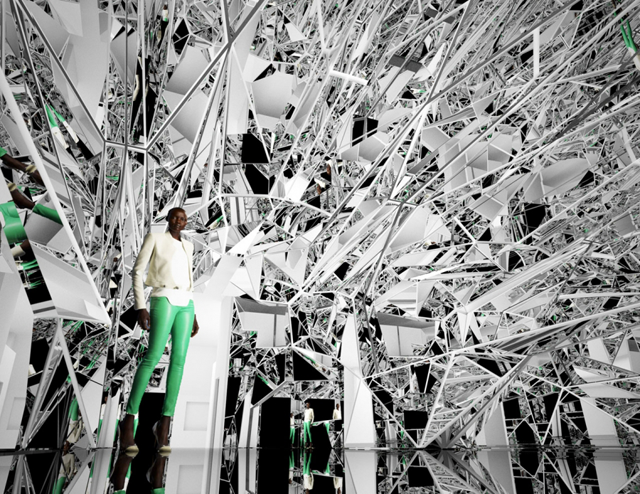
An interview with Nicola Formichetti and Asher Levine by Alessandro Orsini.
Architecture and fashion are two creative disciplines continuously merging into one. Oma/Rem Koolhaas started in 2006 their ongoing series of temporary catwalk installations for Prada, creating a specific temporary setting for the fashion shows. Architecture and Fashion, buildings and Couture have similar approaches when it comes to creating or manufacturing. Both disciplines follow a precise idea of tectonic, in both cases the creative process has to take in consideration how to put together the different pieces of the final product.
Boffo started in 2010 an interesting way of collaboration between architects and fashion designers with an initiative called “Building Fashion”. Through a competition selection process one fashion designer is paired with an architect to design a pop-up store showcasing their work.
I visited the opening of Nicola Formichetti’s pop- up store designed by duo architects Gage/Clemencau. We engaged in an interesting conversation.
AO: When do you think about the tectonic aspect of your project in the design process? When do you think about assembly?
NF: We approach the design of our project from the point of view of the construction. Our complicated shapes derive from a thorough research on tectonic and assembly. We want to create possible objects and a buildability within our complex architectural language.
AO: How do fashion and architecture merge in your project?
NF: Fashion is the fastest of the artistic industry; you can create something in an hour and wear it for an hour. Architecture is the slowest; we take ten years to accomplish a project. It was the most difficult thing here to put together a fast piece of architecture. We blended architecture with fashion resulting in one fused thing. The space we designed is totally boring when empty as the faceted mirrored surface is constantly reflecting itself. You need content, fashion for it to become a very dynamic space that is in constant change as you who move through the space.
AO: What’s the role of software in your work? Are digital tools totally driving your process or are the phenomenological aspects of architecture still an important part of the design?
NF: I would say, it used to be that way, maybe ten years ago I was totally dedicated to Maya, architecture went definitely through that phase, but we need to move beyond that. I’m much more interested in the end product now, the effect that it produces which is certainly a phenomenological aspect of it. There are many people writing about re-saturation of architecture towards the aesthetic effects, Jeff Kipnis, Silvia Lavin, the most progressive part of the industry is moving toward the sensuous, the senses involved in the perception of architecture.
AO: How do you reconcile your language and your way to work with a limited budget?
NF: Well there are two ways to deal with a limited budget. One is to do a bad project that compromises everything you wanted to do.
The other way is to get people on board that are really interested, raise money, and get collaborators. This is exactly how we made the pop up store. We got a number of corporations involved, people dedicating their time, their expertise because they were excited we were making something innovative and new. This way the project becomes a form of research.
AO: I agree with you. It is important to choose projects worth working on. Nicola, how did Boffo help you in the process of creating the pop-up store?
NF: I lived in Rome and I went to architecture school, only on paper! I moved to London and really started my career in fashion. I was searching for a creative innovative architect, and Boffo really helped me to select the right designer for the pop-up store. When I saw the renderings of Mark Foster’s office, I was immediately sure that was the design I was looking for.
AO: I saw your last Mugler collection and it’s very architectural. In which point of the creating process do you come up with the idea of how to assemble all the pieces?
NF: What it is important to me are the fabrics and the shape at the same time, but my process is a deconstructivist process, almost destroying the shape and making it more organic. Sometimes I tend to go against the nature of the material itself. That’s the moment where I think about construction.
Another type of approach is Asher Levine and the digital sets for his SS 2012 collection. It started as a sort of challenge between us after the interview.
This experiment has been first done- again-by AMO/OMA in the Prada Look Book SS 2009. They produced an exploration of the collection’s domain of inspiration: Divinity, tribalism and primitive symbolism graphically represented through the dialogue of references between fashion and imagery.
Asher Levine SS 2012 collection refers to the theme of a spreading epidemic in a city-society much like our own. “The Plague unable to be contained, soon affects exponentially until forced militarization of society becomes the last stand to combat the infection and its growth”. Levine with the help of our office, tried to imagine not only the transformation that affected human life, but how the city itself is transformed by the infection, corrupting the buildings through a series of gigantic parasite-like objects.
AO: Asher, which is the creative process that allows you how to put together the different parts that compose your clothes?
AL: I see my work as something very sculptural and organic. I create unique pieces, like an artist sculpture and then I focus on how the different parts go together.
AO: There is a lot in common with architects in this process.
AL: Architecture and Fashion are very close disciplines. You put together buildings and I put together clothes. The amount of effort in the creative process is the same. We create something that is in your mind after an inspiration. For my SS2012 collection I thought about a virus spreading in the world. There are a lot of references in our society.
AO: Zaha Hadid recently released an interview stating that architecture is one of the most painful professions. In general all the creative jobs are difficult and very hard to emerge. How did you start?
AL: I went to Pace University for Managerial entrepreneurship, but I knew that was not what I wanted to be. I bought a sewing machine and I placed it in my apartment. This is how I started. But I used everything I learned in school to manage myself.
AO: I think you succeeded. Let’s go back to materials and textures.
AL: Those are important elements of my work. They come at an early stage of my creative process. In fact I can spend a lot of time searching for the right fabric and then start to build the concept around it.
AO: Are digital environments like the one we created a possible future platform to tell the story and the concept behind a fashion collection?
AL: Imagery is a powerful tool that helps fashion designers tell the story of their inspirations or references. I think a digital environment as a setting for a fashion collection is a very powerful idea that could be used massively in the future.
These interviews and collaborations took place in New York City during fashion week in September 2011 featuring the work of some of the most interesting and innovative figures in the world of fashion and architecture.
Related Posts :
Category: Article
Views: 5974 Likes: 0
Tags: Asher Levine , cityvision magzine , competition , Creativity , design , Fashion design , interview , Jeff Kipnis , Mark Foster , Nicola Formichetti , project
Comments:
Info:
Info:
Title: MORPHOLOGIC ARCHITECTURE
Time: 15 marzo 2012
Category: Article
Views: 5974 Likes: 0
Tags: Asher Levine , cityvision magzine , competition , Creativity , design , Fashion design , interview , Jeff Kipnis , Mark Foster , Nicola Formichetti , project

